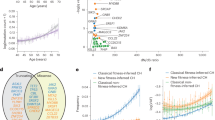Abstract
DNA cell cycle distribution and glutathione (GSH) content in bone marrow were measured both at daytime and midnight over single 24 h periods in 15 cancer patients. Between patients the S-phase demonstrated a difference from lowest to highest value of 700%, whereas the corresponding difference for the G2/M-phase was nearly 900%. The mean GSH content measured in the bone marrow at the two timepoints was 2.24 +/- 0.21 nmol mg-1 protein, range 0.91-4.19 nmol mg-1 protein. A statistically significant higher fraction of cells in S-phase and G2/M-phase was found at daytime as compared to midnight when excluding the four patients with an abnormal circadian variation in cortisol. No significant temporal variation in total bone marrow GSH content was found, although a weak correlation between S-phase and GSH content was demonstrated (r = 0.42; P less than 0.05). This correlation was strengthened when not including the six patients with an abnormal cortisol pattern (4) and bone marrow infiltration (2) (r = 0.66; P = 0.005). Cells in S-phase demonstrated a positive correlation with cells in G2/M-phase (r = 0.64; P less than 0.0001). A negative correlation was found between GSH content and age (r = 0.53; P less than 0.005). Finally, a statistically significant positive correlation was demonstrated between cortisol and both S-phase and G2/M-phase (r = 0.57; P less than 0.001 and r = 0.38; P less than 0.05, respectively). The present study suggests a possibility of optimising cancer therapy and use of hematopoietic growth factors by determining individual average values and circadian stage dependent variation in bone marrow DNA cell cycle distribution. Furthermore, GSH content in bone marrow may predict this tissue's sensitivity to cytotoxic agents.
This is a preview of subscription content, access via your institution
Access options
Subscribe to this journal
Receive 24 print issues and online access
$259.00 per year
only $10.79 per issue
Buy this article
- Purchase on Springer Link
- Instant access to full article PDF
Prices may be subject to local taxes which are calculated during checkout
Similar content being viewed by others
Author information
Authors and Affiliations
Rights and permissions
About this article
Cite this article
Smaaland, R., Abrahamsen, J., Svardal, A. et al. DNA cell cycle distribution and glutathione (GSH) content according to circadian stage in bone marrow of cancer patients. Br J Cancer 66, 39–45 (1992). https://doi.org/10.1038/bjc.1992.213
Issue Date:
DOI: https://doi.org/10.1038/bjc.1992.213
This article is cited by
-
Weak circadian rhythm increases neutropenia risk among breast cancer patients undergoing adjuvant chemotherapy
Breast Cancer Research and Treatment (2018)
-
Zeaxanthin induces Nrf2-mediated phase II enzymes in protection of cell death
Cell Death & Disease (2014)
-
Chronotherapeutics: The Relevance of Timing in Cancer Therapy
Cancer Causes & Control (2006)



